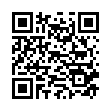|
Эта публикация цитируется в 11 научных статьях (всего в 11 статьях)
An Alternative Canonical Approach to the Ghost Problem in a Complexified Extension of the Pais–Uhlenbeck Oscillator
A. Déctora, H. A. Morales-Técotlab, L. F. Urrutiaa, J. D. Vergaraa
a Instituto de Ciencias Nucleares, Universidad Nacional Autónoma de México, A. Postal 70-543, México D. F., México
b Departamento de Física, Universidad Autónoma Metropolitana Iztapalapa, San Rafael Atlixco 186, Col. Vicentina, CP 09340, México D. F., México
Аннотация:
Our purpose in this paper is to analyze the Pais–Uhlenbeck (PU) oscillator using complex canonical transformations. We show that starting from a Lagrangian approach we obtain a transformation that makes the extended PU oscillator, with unequal frequencies, to be equivalent to two standard second order oscillators which have the original number of degrees of freedom. Such extension is provided by adding a total time derivative to the PU Lagrangian together with a complexification of the original variables further subjected to reality conditions in order to maintain the required number of degrees of freedom. The analysis is accomplished at both the classical and quantum levels. Remarkably, at the quantum level the negative norm states are eliminated, as well as the problems of unbounded below energy and non-unitary time evolution. We illustrate the idea of our approach by eliminating the negative norm states in a complex oscillator. Next, we extend the procedure to the
Pais–Uhlenbeck oscillator. The corresponding quantum propagators are calculated using Schwinger's quantum action principle. We also discuss the equal frequency case at the classical level.
Ключевые слова:
quantum canonical transformations; higher order derivative models.
Поступила: 14 ноября 2008 г.; в окончательном варианте 22 апреля 2009 г.; опубликована 5 мая 2009 г.
Образец цитирования:
A. Déctor, H. A. Morales-Técotl, L. F. Urrutia, J. D. Vergara, “An Alternative Canonical Approach to the Ghost Problem in a Complexified Extension of the Pais–Uhlenbeck Oscillator”, SIGMA, 5 (2009), 053, 22 pp.
Образцы ссылок на эту страницу:
https://www.mathnet.ru/rus/sigma399 https://www.mathnet.ru/rus/sigma/v5/p53
|

| Статистика просмотров: |
| Страница аннотации: | 205 | | PDF полного текста: | 64 | | Список литературы: | 50 |
|




 Обратная связь:
Обратная связь: Пользовательское соглашение
Пользовательское соглашение
 Регистрация посетителей портала
Регистрация посетителей портала Логотипы
Логотипы








 Цитирование в формате
Цитирование в формате 
